
Kardiovaskuläre Dysfunktion
Team
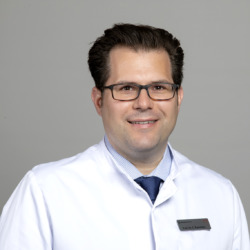
Prof. Dr. med.
Christos Rammos, MHBA
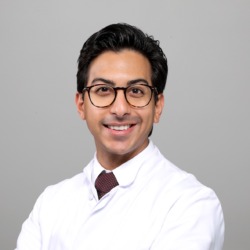
Dr. med.
Daniel Messiha

Dr. med.
David Pinsdorf
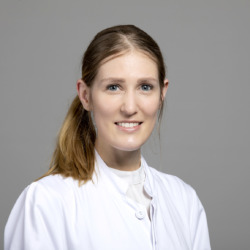
Dr. med.
Kristina Hogrebe
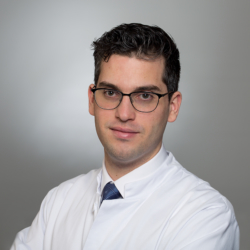
Dr. med.
Aristotelis Kontogiannis
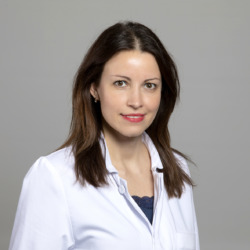
Dr. med.
Olga Petrikhovich
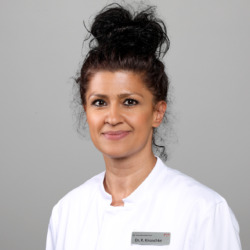
Dr. med.
Ramtin Knuschke
Leitungsteam
Doctoral Students
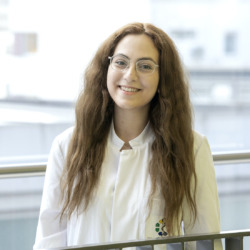
cand. Med.
Miriam Rinke

cand. Med.
Annika Tratnik
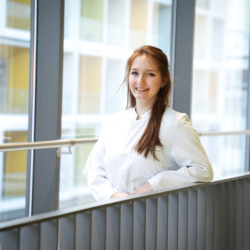
cand. Med.
Larissa Ott

Sara Fakea

cand. med.
Medina Sacirovic

cand. med.
Berna Akan
Topics
Our research group is led by Professor Dr. Christos Rammos and investigates cardiovascular dysregulations with a special focus on translational vascular inflammation and microbiome mediated effects.
- Atherosclerosis
- Peripheral artery disease
- Vascular inflammation
- Microbiome metabolomics and acute cardiovascular dysregulation
Clinical projects
Vascular Effects Through Sirolimus vs. Paclitaxel DCB Implantation (the LIMUS Flow study, NCT05450042)
Endovascular treatment of symptomatic atherosclerotic peripheral artery disease (PAD) is recommended as the primary revascularization strategy. Percutaneous transluminal angioplasty (PTA) of the superficial femoral artery has a high initial success rate, but restenosis and dissections frequently occur.The influence of the novel devices with improved hemodynamic capabilities with respect to vasomotion of the vessel wall, vascular function and vascular compliance can be measured by FMD (flow-mediated dilation), arterial stiffness indices and vascular strain analysis. The aim of this ITT is to determine the potential improvement and impact of the SELUTION SLR in the infrainguinal arteries on local vascular function.
The Biomimetic Stent and Vascular Functions Study (the MIMICS Flow trial NCT05447052)
The MIMICS FLOW Study is a single-center, single-blind, investigator-initiated, randomized parallel group trial.
The impact of a novel biomimetical stent with a helical curvature provides superior hemodynamic and biomechanical performance and advantages. Additionally, it promotes swirling blood flow, elevating wall sheer strength, which is patency-protective and might impact on vascular functions due to completely different vascular properties through altered blood flow.
The influence of the novel devices and stent-platforms with improved hemodynamic capabilities with respect to vasomotor of the vessel wall, vascular function and vascular compliance can be measured by FMD, arterial stiffness indices and vascular strain analysis.
Safety and Efficacy of Atherectomy on VasculaR Functions (the SAVioR trial, NCT04092972)
Interventional strategies aim to restore tissue perfusion. However, despite the simple reopening of a narrowed artery they affect endothelial function, perpetuating dysfunctional vascular homeostasis. PTA and atherectomy might alter the endothelial function but the mechanisms are incompletely understood. The primary goal of atherectomy is vessel preparation and improving compliance, which could aid in preserving vessel functions. Aim of this study is to determine safety, efficacy, patency and vessel functions in the femoropopliteal artery following atherectomy and DCB.
Interplay between oral-enteral microbiome axis and acute cardiovascular events (NCT05122689)
We seek to investigate the influence of microbiome dependent metabolites on acute cardiovascular events using modern 16sRNA sequencing technologies and analysis of downstream cytokines. Our main focus is on acute myocardial infarction and critical limb threatening ischemia.
Characterization of bacterial plaque composition
Utilizing our broad experience in interventional treatment of peripheral artery disease with state-of-the-art catheter-based techniques like rotational thrombectomy (Rotarex), we aim at gaining a deep understanding of our patient’s plaque composition. This is with a special focus on contribution of the gut microbiome to bacterial plaque composition.
Basic science projects
Microbiome mediated effects on reperfused acute myocardial infarction
Emerging evidence shows that a microbiome gut dysbiosis influences cardiovascular functions. Using a murine model of reperfused acute myocardial infarction (repAMI) we aim to investigate the interplay between repAMI and the gut microbiome. We seek to gain a deeper understanding of the underlying mechanisms to find new ways to salvage the burden of acute cardiovascular events.